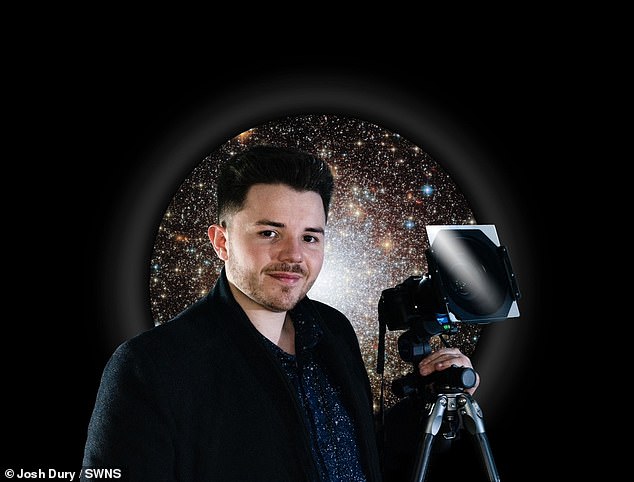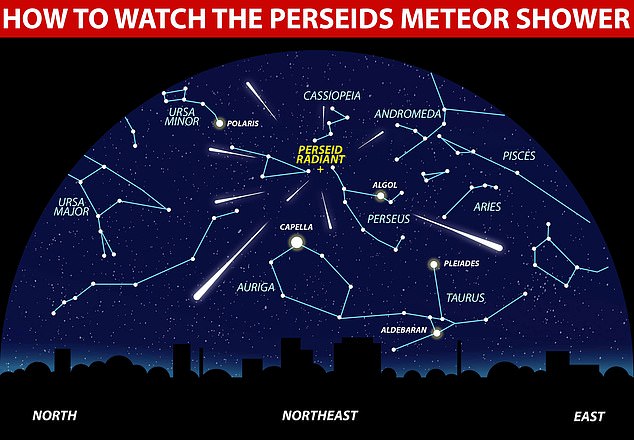A stunning image made up of 43 separate images captures a meteor shower over Stonehenge
The meteorites that lit up the sky around Stonehenge were captured by a photographer thanks to his new camera technology.
The amazing sight was photographed by Josh Dury, from Compton Martin, who managed to combine 46 different images of the Perseid meteor shower over the megalithic structure.
The 26-year-old astronomer said: ‘The combination creates a visual story of shooting stars’ raining down on Stonehenge.
‘This picture was taken over three and a half hours on Friday (9 Aug) night from 10:30pm.’
It comes as the Perseids meteor shower is nearing its peak this weekend and will likely be at its peak Sunday night into Monday.

The stunning image combines 43 images of the Perseid meteors as they fell over Stonehenge, Wiltshire
The Perseids are a large meteor shower that is usually visible from mid-July to late August.
It passes through Earth’s atmosphere every year as Earth orbits debris left by the Swift-Tuttle comet.
Meteoroids from comets, typically no larger than a grain of sand, burn up when they hit Earth’s atmosphere at 36 kilometers per second, creating a burst of light that shoots across the sky.
At its peak each year, viewers can see up to 100 stars every hour.
The highest temperatures can reach anywhere from 1,648°C to 5,537°C as they hit the atmosphere.
The meteors are called Perseids because they appear to come from the constellation Perseus.

Photo by astronomer Josh Drury (pictured)

Skywatchers across the UK will be among those able to enjoy the Perseid meteor shower, which occurs when Earth plows into the debris left by the Swift-Tuttle Comet during its journey across the internal solar system.
Although they peak on the night of August 12, Daniel Brown, associate professor of astronomy at Nottingham Trent University, said it was important to keep an eye out for a second peak, should it occur.
He said: The meteor shower increases gradually from mid-July to reach its peak of 100 per hour on August 12. It then decreases until mid-August.
However, in reality, the phenomenon may show complex variation which means that the peak may not be the only one.
‘The years 2018 and 2020 had more activity a day or two after the big peak.
‘So, in addition to meteor showers not being a one-night thing – gradually increasing and then decreasing over several days – we can see that very active evenings can be followed by others in a day or two later.’
To make the most of meteors, experts say viewers should avoid well-lit and built-up areas and try to get unobstructed views.
Prof Brown said: ‘The best time this year during the peak is the second half of the night, the early hours of August 13. Find a dark place, away from direct light.’
He said it would take viewers up to 30 minutes to adjust to the darkness.
Prof Brown said: ‘Be patient, and it’s best to look across the sky as meteors will be visible everywhere.’
#stunning #image #separate #images #captures #meteor #shower #Stonehenge
